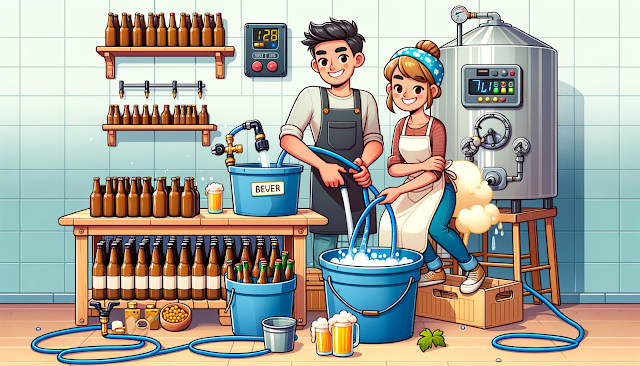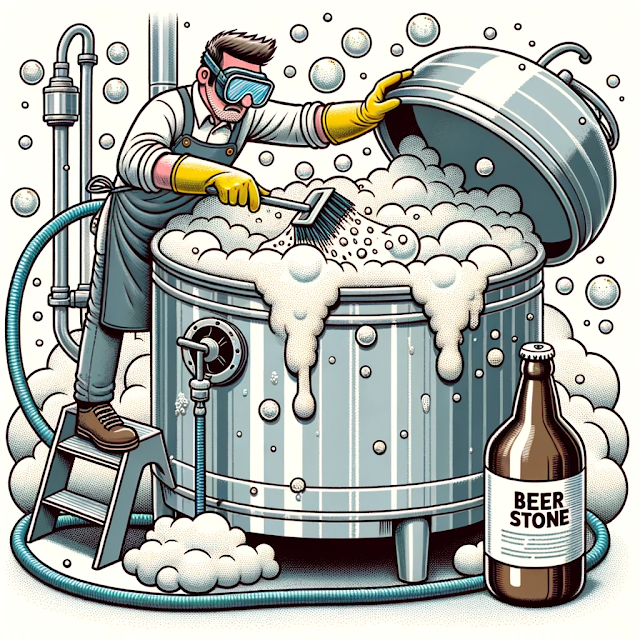What Exactly is a 'No-Rinse' Sanitizer? The Science Behind the Convenience
The concept of 'no-rinse' sanitizers is rooted in their chemical composition. These solutions are formulated to kill bacteria, yeast, and molds effectively, and then break down into harmless substances that don't need to be rinsed away. This is a significant advantage over traditional sanitizers like caustic soda or bleach, which require a thorough rinsing to remove residues that could contaminate your brew.The Contenders: Choosing the Best No-Rinse Sanitizer
Star San: The Industry Standard Unveiled
Star San has carved a niche for itself as a reliable and effective sanitizer in the brewing community. But what sets it apart?The 'no-rinse' feature of Star San is not just a marketing gimmick; it's backed by science. When used at the correct concentration—specifically, one ounce per 5 gallons of water—the acids in the solution break down into phosphate and sulfate, which are harmless to your brew. This dual-action of cleaning and breaking down into benign substances makes Star San a holistic choice for brewers who demand efficacy without compromise.
Iodophor: The Medical-Grade Option Explored
Iodophor's no-rinse capability comes from its ability to sublimate—transition from a solid or liquid state into a gas—leaving no residue behind. This is why it's crucial to soak your equipment for at least 10 minutes; it allows the iodine enough time to both sanitize and then evaporate. While it's a powerful sanitizer, it's also gentle, making it a versatile choice for various brewing setups.
One Step: The Oxygen-Based Cleaner Decoded
One Step offers a unique approach to sanitization with its oxygen-based cleaner. The active ingredient, sodium carbonate peroxyhydrate, releases hydrogen peroxide upon dissolving in water. Hydrogen peroxide is a well-known antiseptic that works by producing free radicals that attack microbial cells.What makes One Step particularly interesting is its rapid action. With just two minutes of contact time, it achieves a level of sanitization that rivals more traditional methods. This speed is attributed to the rapid breakdown of hydrogen peroxide into water and oxygen, leaving no harmful residues. This makes One Step not just a cleaner but a highly effective sanitizer that aligns with the no-rinse philosophy.
Sodium Percarbonate: The Laundry Room Gem Unearthed
Sodium percarbonate is the unsung hero of home brewing sanitization. Commonly found in laundry detergents like Oxi-Clean, it's a compound that, when dissolved in water, releases sodium carbonate and hydrogen peroxide. The latter is the active sanitizing agent, working in a similar way to the hydrogen peroxide released by One Step.The appeal of sodium percarbonate lies in its accessibility and cost-effectiveness. It's a readily available household item that doubles as a brewing sanitizer. For those concerned about additives in laundry products, sodium percarbonate can also be purchased in its pure form, offering a no-frills, effective sanitization method.
The Verdict: Just Do It, But Do It Right
Choosing a no-rinse sanitizer is not just about picking a product; it's about aligning with a sanitization philosophy that values both effectiveness and convenience. Whether you opt for the tried-and-true Star San, the medical-grade Iodophor, the quick-acting One Step, or the household-handy sodium percarbonate, the key is to follow the usage guidelines meticulously.












